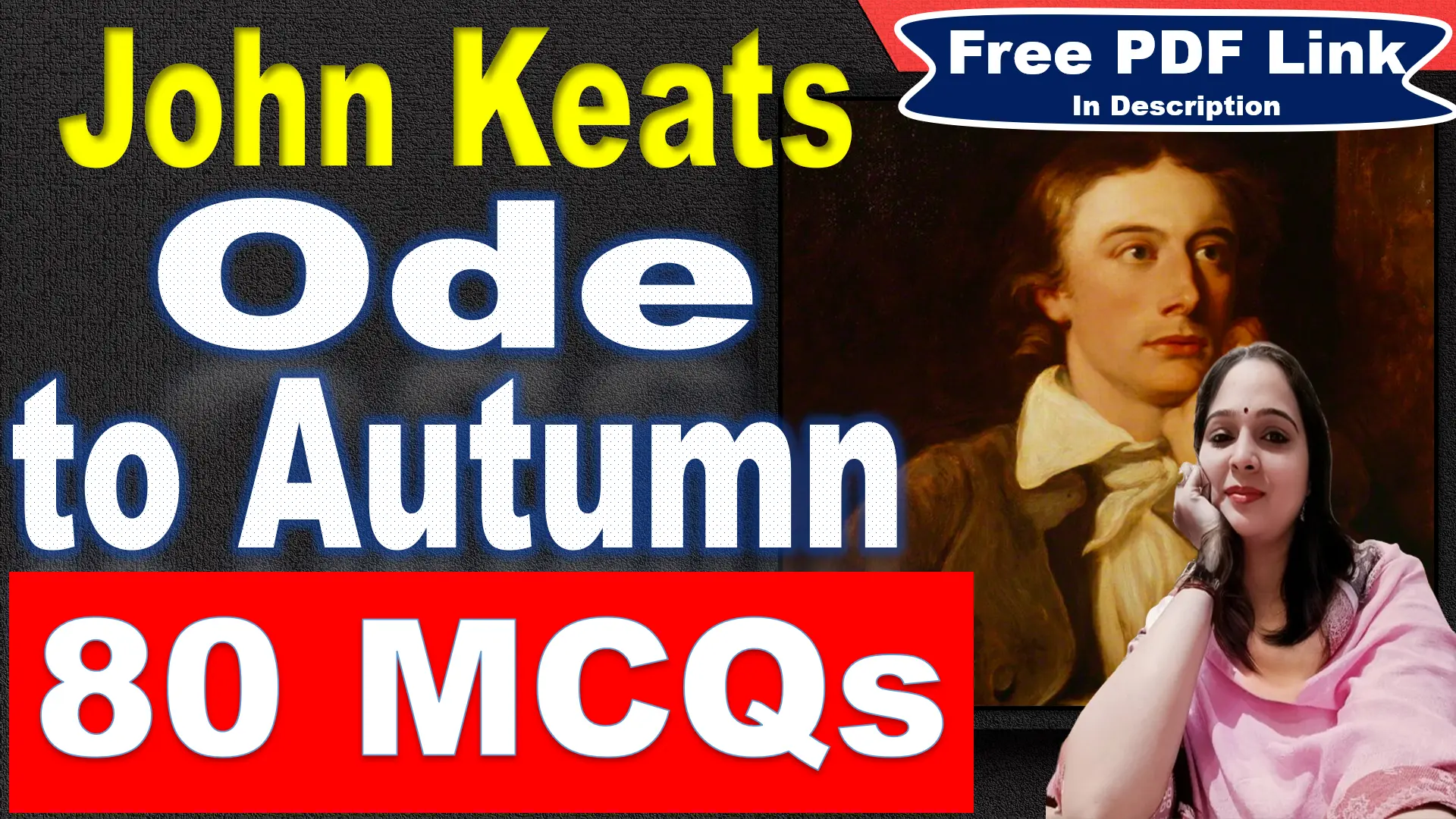Essay Type Questions
Write the critical appreciation of the poem “The Solitary Reaper”.
Introduction “The Solitary Reaper” is a lyrical ballad penned by William Wordsworth, one of the most influential figures of the Romantic Movement in English literature. The poem is celebrated for its vivid portrayal of a solitary woman singing while working in the fields, and it beautifully encapsulates Wordsworth’s appreciation for nature and the simple, rustic life.
Background Wordsworth wrote “The Solitary Reaper” during the Romantic era, a period marked by a deep reverence for nature, emotion, and the individual. The poem was inspired by Wordsworth’s travels through the Scottish Highlands, where he encountered a young woman singing while working in the fields. This encounter left a deep impression on Wordsworth, leading him to compose this poem.
Poetic Structure “The Solitary Reaper” is composed of four eight-line stanzas. Each stanza is self-contained, presenting a complete thought or image, yet they are interconnected, building upon each other to create a cohesive whole. This structure allows Wordsworth to develop his ideas and images in a concise yet comprehensive manner.
Rhyme Scheme The poem follows ABABCCDD (Second and Third Stanza) and ABCBDDEE (First and Fourth Stanza) rhyme scheme. This pattern creates a musical quality that complements the theme of the poem, which revolves around the power of song. The consistent rhyme scheme also provides a sense of structure and rhythm to the poem.
Meter The poem is written in iambic tetrameter, which gives it a rhythmic and melodic quality. This meter mirrors the rhythm of the reaper’s song and enhances the musicality of the poem. The regular meter also provides a sense of balance and harmony to the poem.
Themes The main themes of the poem are nature, solitude, and the power of music. Wordsworth uses the solitary figure of the reaper and her song to explore these themes and their interconnections. The reaper, alone in the field, symbolizes the beauty and tranquility of nature, while her song represents the power of music to express emotion and touch the human heart.
Imagery and Symbolism Wordsworth uses vivid imagery and symbolism to bring the poem to life. He describes the Scottish landscape, the reaper, and her song in rich detail, creating a vivid and evocative picture in the reader’s mind. The reaper’s song, although unintelligible to the speaker, is described as beautiful and melancholic, symbolizing the universal human experiences of joy, sorrow, and longing.
Interpretation of the Reaper’s Song The reaper’s song, although unintelligible to the speaker, is described as beautiful and melancholic. The speaker speculates that the song could be about past sorrows, everyday concerns, or future fears. This speculation adds a layer of depth and complexity to the poem, inviting the reader to speculate along with the speaker about the reaper’s life and feelings.
Literary Devices Wordsworth employs various literary devices such as alliteration, assonance, metaphor, and simile to enhance the beauty and expressiveness of the poem. For instance, he uses alliteration (“sickle silently”, “sings a song”) to create a musical effect, and simile (“No Nightingale did ever chaunt / More welcome notes to weary bands”) to draw comparisons and create vivid imagery.
Cultural and Historical Context The poem reflects the Romantic era’s emphasis on emotion, individualism, and the beauty and power of nature. It also incorporates elements of Scottish folk culture, as seen in the depiction of the reaper and her song. The poem thus serves as a cultural and historical document, reflecting the values and sensibilities of the Romantic era.
Critical Reception and Interpretation “The Solitary Reaper” has been widely acclaimed for its evocative imagery, lyrical beauty, and profound themes. Critics and scholars have interpreted the poem in various ways, reflecting its richness and complexity. Some see it as a celebration of the beauty of nature and the power of music, while others view it as a meditation on solitude, longing, and the human condition.
Significance of “The Solitary Reaper” in Literature The poem is significant for its exploration of the themes of solitude, nature, and the power of music. It is considered a masterpiece of Romantic literature and has had a lasting impact on the genre. The poem’s evocative imagery, lyrical beauty, and profound themes continue to resonate with readers and scholars, making it a timeless piece of literature.
In conclusion, “The Solitary Reaper” is a testament to Wordsworth’s ability to find profound meaning and beauty in the simplest of scenes. Its evocative imagery, lyrical beauty, and exploration of universal themes make it a timeless piece of literature that continues to resonate with readers and scholars.





